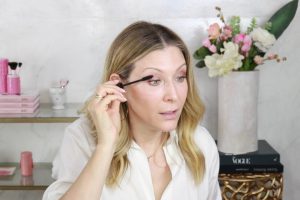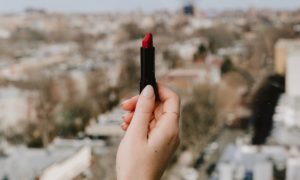You know that satisfying foaming effect you get from your face wash, shampoo, or cleaning products? Turns out, the chemicals that create foaming – sodium lauryl sulfate (SLS) and sodium laureth sulfate (SLES) – are under scrutiny for being irritants and possibly harmful to human health.
Let’s look a little deeper.
What exactly are SLS and SLES?
Both SLS and SLES are chemicals used in cosmetics, personal care items, and cleaning products to create foaming, giving the perception of deep cleaning.
To be a little more specific, both are surfactants, or compounds that reduce surface tension when added to solutions of water and oil. Surfactants are used for different purposes, including to cleanse and make foam.
Both chemicals have been shown to be biodegradable [1].
Can SLS or SLES affect my health?
Like many surfactants, SLS and SLES can trigger skin and eye irritation, including hives, rashes, and corneal inflammation in people who are sensitive to them [2]. For the most part, these conditions are uncomfortable but not threatening to long-term health (unless they continue repeatedly over time). SLS is considered more of an irritant than SLES [3].
Interestingly, despite allegations of SLS and SLES being toxic to humans (including potentially contributing to cancer and endocrine disruption) [4], early research is pointing towards long-term exposure being relatively safe [5]. That said, no long term studies have been conducted, so we don’t know for sure.
Curious to picture what’s going on scientifically when SLES and SLES create skin irritation? Most research suggests that both chemicals strip the skin of important oils (lipids), which can lead to skin barrier dysfunction and itching, irritation, and inflamed skin. Think about your skin as bricks and mortar, where the cells are bricks and the mortar is largely made up of oils. SLS and SLES strip away that mortar – or those oils. Recent research also suggests that SLS and SLES might trigger skin barrier dysfunction by affecting skin proteins [6]. You learn something new every day!
How do I get exposed? How much exposure might be harmful?
We get exposed mainly through skin absorption.
It’s also possible to get exposed through ingestion and inhalation, but due to the way we typically use foaming products, skin absorption is by far the most common path of exposure.
If you’re sensitive to these compounds, as little as one use can cause skin and/or eye problems.
So, what’s the answer? Should I avoid SLS and SLES?
If you’re experiencing skin or eye irritation, it could be a result of using products with SLS and SLES. In that case, you might consider avoiding them.
Since early data is suggesting that there probably aren’t other serious consequences, they might rank lower on your list to avoid compared to known toxins like phthalates and formaldehyde.
Some women prefer to play it extra safe and avoid SLS and SLES altogether.
How can I tell which products are formulated without SLS and SLES?
If you want to avoid SLS or SLES, shop with a clean beauty company that screens out products with SLS and SLES. Otherwise, read product ingredient labels for “sodium lauryl sulfate” and “sodium laureth sulfate.”
NakedPoppy bottom line: in an abundance of caution, we avoid SLS and SLES
Because they’re common irritants, NakedPoppy avoids products formulated with SLS and SLES. We want to try and remain rash and inflammation free, and help you do the same!
Get “shockingly accurate” clean beauty picks. Take your beauty assessment.
This article has been reviewed by two scientists: Tim McCraw, PhD chemist and CEO of Skin Science Advisors, and Ilene Ruhoy, M.D., neurologist and PhD in Environmental Toxicology.
Let us know in the comments: what are your thoughts or questions about SLS and SLES?
References
[1] SLS and SLES are biodegradable:
https://www.ncbi.nlm.nih.gov/pmc/articles/PMC4651417/
https://www.ncbi.nlm.nih.gov/pubmed/28411499
[2] SLS and SLES can trigger skin and eye irritation, including hives, rashes, and corneal inflammation in people who are sensitive to them:
https://www.cir-safety.org/sites/default/files/imports/alerts.pdf
http://online.personalcarecouncil.org/ctfa-static/online/lists/cir-pdfs/PR533.PDF
[3] SLS is more of an irritant than SLES:
https://www.ncbi.nlm.nih.gov/pubmed/?term=Subclinical%2C+non-erythematous+irritation+with+an+open+assay+model+(washing)%3A+sodium+lauryl+sulfate+(SLS)+versus+sodium+laureth+sulfate+(SLES)
[4] Allegations of SLS and SLES being toxic to humans (including potentially contributing to cancer and endocrine disruption):
https://www.ncbi.nlm.nih.gov/pmc/articles/PMC4651417/
[5] Early research is pointing towards long term exposure being relatively safe:
https://www.cir-safety.org/sites/default/files/imports/alerts.pdf
https://www.ncbi.nlm.nih.gov/pmc/articles/PMC4651417/
[6] SLES and SLES might trigger skin barrier dysfunction by affecting skin proteins:
https://onlinelibrary.wiley.com/doi/full/10.1111/j.1396-0296.2004.04S1002.x






What we should do to reduce SLS irritation power for the production of SLES From SLS? Are CAPB And HEC are enough to reduce it’s irritation during the production of SLES by adding only SLS, CAPB, HEC, Water and sodium sulphate with out Ethoxylation process?